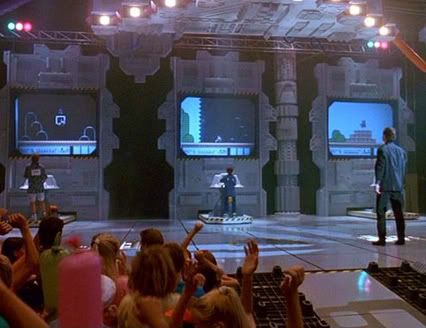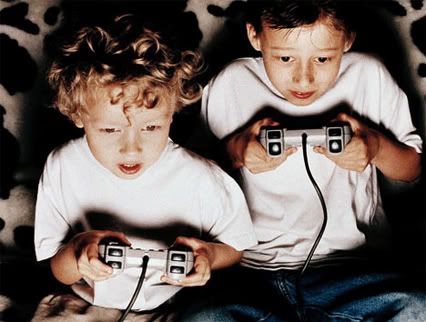
To quote one of our generation’s most eloquent and internationally recognised thinkers on the medium of video games, the Angry Video Game Nerd; “What’s the most important part about any game? Well, being able to fucking play it.”
This makes sense. A game needs to be played to fulfil its purpose as a game, even if many games nonchalantly redefine what “playing” means (we are obviously glaring at you, MMORPGs). But the enjoyment of a game does not have to stop at the person holding the controller, but can extend much further than that – even if that was not in the developer’s intentions.
You probably know this from experience, having sat with friends or family members, playing a single player game together. Many of my fondest memories of playing in a group are ones where we passed the controller between us while the others sat in the passenger seat. I especially remember when my Dad brought the original Resident Evil home for our new-fangled PlayStation deviceamajig and I watched every gloriously polygonal step through that mansion, sitting diagonally behind his hairless bonce. Since I was too much of a wuss, he took care of the action and I helped out when it was time for a puzzle. We effectively became a team, me shouting orders and solving brainteasers while he upheld the headshot quota.

"I feel so close to you, Dad."
This phenomenon has taken the step into the digital age with the advent of Youtube, in the form of Let’s Plays. An LP can take many shapes but the most common variety is simply a recording of somebody playing through a game, while adding commentary over it in real time. These can either take the form of Speed Runs where a sad/awesome (delete where applicable) person finishes a game as quickly as humanly possible, or Blind Runs which covers somebody’s first play-through of a game. There are too many Youtube channels to accurately count devoted to this but a quick search for “let’s play” returns a quarter of a million results.
So what is so enjoyable about watching somebody else play a game, even when they are not in the room with you? It’s a dictum that has been around ever since videogames and human eyeballs first co-existed; watching others play games is no fun. And yet, here we are, enjoying ourselves, watching other people play games. What motivates us? Well, a few things.
Games ARE a social experience

We can’t get around this, especially in a time when most of us take part in multiplayer games with complete strangers on a daily basis. Shared fun might just be twice the fun after all. Playing with friends and strangers makes many games a lot more fun than they would have been without it. Years after I had first played it with my dad I finished Resident Evil on my own and I found, to my surprise, that it was not as fun as I remembered it. This time I was on my own, lonely and vulnerable, and yet the experience did not measure up. Clearly, our bonding was important to how I remembered the game itself – the company was not just an added boon, it was essential on a personal level.
Learning from watching

We may forget this at times, but videogames can be really bloody daunting for novice gamers. To watch somebody else play through a game you can get an idea of how the controls work, what kind of actions you will need to perform, and get a better idea of what obstacles you might face. After a while you might feel inclined to step into the ring yourself and give it a whirl. This is likely how most people got into games to begin with and the internet has done away even with the small hurdle of actually having to know somebody with a game console.
Games are becoming more cinematic

People who claim that watching videogames is no fun have always been wrong, but more so today than ever. Today, games are more cinematic and visually pleasing than they have ever been which makes them more enjoyable on a purely passive level. This is especially true for adventure games and horror games in particular. A scare is always a scare, just like a well-written character is always just that. In these cases we simply enjoy them differently to how we would if we just played them ourselves and could possibly take more from the story than we would have otherwise. I know a fair few people who have never played a Silent Hill game but still claim to love Silent Hill 2. It’s understandable when you consider that they got all the best bits – the story, the atmosphere and the scares – without having to wrestle with the clunky controls.
The MST3K Effect (a.k.a. The Morgan Freeman Theorem)

A good narrator can make anything worthwhile. Watching somebody record themselves playing a game for several hours might seem like digital purgatory, but with a funny and insightful person at the helm it can become something far more entertaining. A good LPer is able to create something new, almost separate from the original product itself, making their commentary an event in itself. The people behind Mystery Science Theatre 3000 and the spiritual sequel RiffTrax did this to old movies. Let’s Plays are rarely scripted and therefore not as gag-heavy as these shows, but the effect is mostly the same. Listening to a funny person is always going to be funny, regardless of what cultural text they happen to be riffing on in the process.
It’s fair to say that the definition for “playing a game” has shifted quite drastically, to the point where we can now take it in as an “experience” in its own right as well as a game. It doesn’t even stop there as there are currently TV channels cropping up in the US and certain parts of Asia which are completely devoted to professional gaming. If that trend spreads to our corner of the world we will soon be able to enjoy live Starcraft 2 matches between the mightiest nerds on the planet. Clearly, watching games is becoming almost as popular as playing them, which should be great news for Quantic Dream.
















Comments